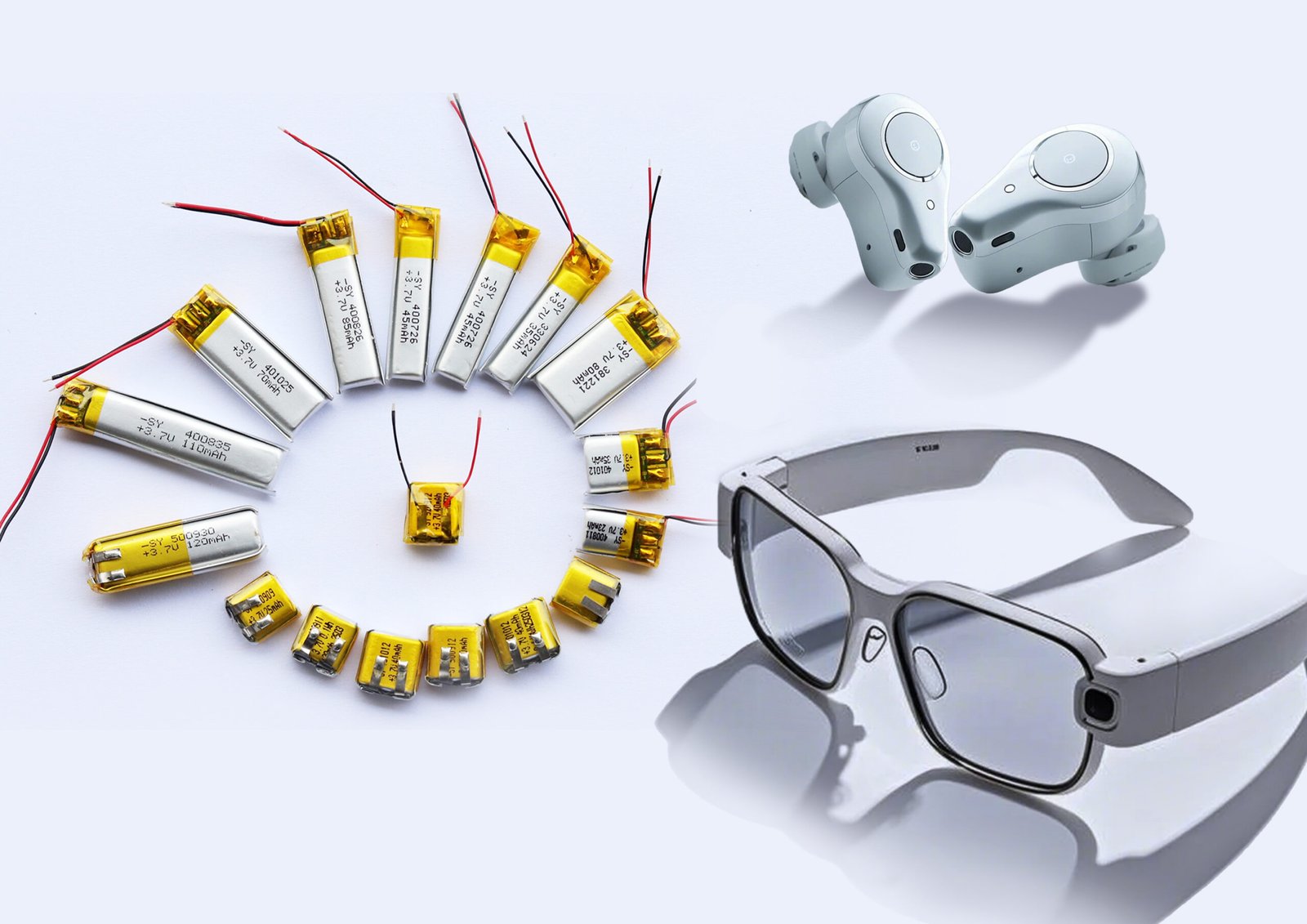In today’s fast-evolving consumer electronics landscape, polymer lithium batteries (LiPo) have become the cornerstone of powering devices thanks to their light weight, flexible design, and high energy density. Wearable devices — such as smartwatches, fitness bands, and medical monitors — rely heavily on polymer lithium batteries to deliver reliable performance within compact spaces. As user expectations for quick and convenient charging grow, a critical question arises: Should you use fast charging or normal (standard) charging for your wearable device battery?
This in-depth article explores the advantages and trade-offs of fast charging versus normal charging specifically for polymer lithium batteries in wearable devices. We analyze the technical principles, performance impact, safety aspects, and practical considerations to help you understand which charging method optimally balances convenience, battery lifespan, and device safety. Accompanied by a detailed comparison table, this 4000-word analysis draws on current industry research and the expertise of battery manufacturers, including insights aligned with the capabilities of LIPO Battery SY, a leading polymer lithium battery R&D and manufacturing company specializing in wearables and medical applications.

Table of Contents
ToggleFundamentals of Polymer Lithium Batteries in Wearable Devices
Polymer lithium batteries (LiPo) use a polymer-based electrolyte instead of the liquid electrolytes in traditional lithium-ion batteries. This allows the battery to be assembled in ultra-thin, flexible, and custom-shaped forms — critical for the ergonomic, lightweight design of wearable electronics.
Key polymer lithium battery features influencing charging include:
-
Energy density: Typically 250–400 Wh/kg, providing sufficient power in small volumes.
-
Form factor flexibility: Shapes mold to device contours, unlike rigid cylindrical cells.
-
Thermal stability: Polymer electrolytes offer improved internal safety.
-
Cycle life: Typically ranges from 800 to 1500 full charge-discharge cycles, dependent on charging mode.
Charging method affects all these factors, especially in compact wearables where heat dissipation is limited.
How Fast Charging and Normal Charging Differ Technically
| Feature | Normal Charging | Fast Charging |
|---|---|---|
| Typical Charging Current | 0.2C to 0.5C (e.g., 200-500 mA for 1000mAh) | 1C to 5C or more (e.g., 1A to 5A for 1000mAh) |
| Charging Time (0–100%) | 2 to 4 hours | 30 to 60 minutes |
| Charging Profile | Constant current (CC), then constant voltage (CV) | Optimized CC/CV with adaptive algorithms |
| Heat Generation | Low (25–35°C typical) | High (40–50°C or more without cooling) |
| Stress on Electrodes | Minimal stress, gentle ion intercalation | Increased risk of lithium plating and overheating |
| Battery Management System (BMS) | Standard monitoring | Advanced algorithms with thermal & current control |
| Impact on Cycle Life | Extended – can exceed 3000 cycles | Reduced – possible drop to 1000 cycles or fewer |
| Safety Risk | Minimal | Higher, needs strict controls |
Note: C-rate refers to the charge or discharge current relative to battery capacity. 1C means charging the battery’s full capacity in one hour.
Detailed Comparison: Fast vs Normal Charging for LiPo Batteries in Wearables
Charging Speed and User Convenience
Fast charging significantly reduces downtime. For users who depend on wearable devices during the day—for fitness tracking, health monitoring, or communication—replenishing battery in 30–60 minutes enables high usage without long charging waits. With advances in polymer lithium battery chemistry and battery management systems, many wearables now support partial fast charging (e.g., 50%-80% capacity in under an hour), which often aligns with typical user charging habits.
In contrast, normal charging takes between 2 to 4 hours to fully charge a typical 300-500 mAh wearable battery but generates less heat and stress on cell chemistry, offering the longest possible lifespan.
Battery Longevity and Degradation
Repeatedly using fast charging on polymer lithium batteries can accelerate aging mechanisms:
-
Lithium plating: Excess lithium deposits on the anode surface at high charge rates, potentially leading to capacity loss and safety hazards.
-
Electrode material degradation: Faster charging increases mechanical and chemical stress, impacting the active materials inside the battery.
-
Elevated temperatures: Heat generated during fast charging accelerates electrolyte decomposition and loss of lithium ions.
Studies indicate that fast charging can reduce cycle life approximately by half or more compared to slow charging under typical operating conditions. Conversely, normal charging is gentler, reducing these degradation effects and enabling over 3000 full cycles in some polymer lithium batteries.
Users should note that many modern polymer lithium batteries and wearables incorporate optimized charging profiles and temperature management to minimize these effects, but fast charging still presents a trade-off between longevity and convenience.

Safety Considerations
Because polymer lithium batteries in wearables have limited space for heat dissipation and protective systems, normal charging tends to be safer, maintaining lower temperatures and reducing the risk of thermal runaway or swelling.
Fast charging demands:
-
Highly sophisticated Battery Management Systems (BMS) that constantly monitor voltage, current, temperature, and cell balancing.
-
Use of high-quality cells with enhanced thermal stability and cathode materials less prone to gas generation.
-
Design provisions in wearables for thermal management, such as heat spreaders or conductive casings.
Failure in these safeguards can lead to battery malfunction, swelling, or in rare cases, combustion.
Impact of Charging Behavior on Wearable Device Design
-
Wearables optimized for fast charging may incorporate more complex electronics and cooling solutions, slightly increasing size or cost.
-
Devices favoring normal charging benefit from simpler architecture and lower production cost but require users to plan longer charge durations.
-
Manufacturers also segment their offerings: fitness trackers might emphasize battery life with normal charge, while smartwatch flagships balance fast top-offs with health features.
Cost and Environmental Impact
Fast charging setups use specialized chargers capable of switching currents and voltages quickly, raising cost compared to standard chargers. Also, energy losses (heat) and shorter battery lifespan represent indirect environmental costs due to more frequent battery replacements.
Normal charging is more energy efficient per cycle and typically less costly but less convenient for on-the-go users.
Industry Practices: Balancing Usage
Many users and manufacturers adopt a hybrid approach:
-
Use fast charging sparingly to get quick power boosts when needed.
-
Rely on normal charging (overnight or during extended rest) to preserve battery health.
This practice leverages the benefits of both, extending the wearable’s useful life and reducing the risk of premature battery failure.
Table: Side-By-Side Comparison for Polymer Lithium Battery Charging in Wearables
| Aspect | Fast Charging | Normal Charging | Recommended Use Cases |
|---|---|---|---|
| Charging Duration | 30–60 minutes | 2–4 hours | Quick top-ups vs overnight charging |
| Battery Cycle Life Impact | ~50% faster degradation | Extended cycles (>3000 cycles) | Emergency fast charge vs regular use |
| Heat Generation | High, requires advanced safety | Low, safer for polymer battery | Controlled environments for slow charge |
| Safety Precautions | Advanced BMS, thermal sensors needed | Basic BMS sufficient | High power devices vs standard trackers |
| Equipment Cost | Higher cost fast charger needed | Low cost standard charger | Power users vs casual users |
| Convenience | Max convenience during busy day | Patience required | On-demand charging vs routine overnight |
| Environmental Impact | More energy waste, shorter battery | Less energy waste, longer lifespan | Sustainability-focused use |
| Device Design Complexity | More robust with heat dissipation | Simpler and cheaper | Premium smartwatches vs basic wearables |
Technical Insights Supporting LIPO Battery SY’s Leadership
At LIPO Battery SY, with a focus on polymer lithium batteries for smart wearables and medical devices, significant R&D investment is dedicated to fast-charging polymer lithium cells optimized for minimal degradation, safety, and performance.
-
Customized polymer gel electrolytes improve ion flow while minimizing side reactions at high currents.
-
Integrated multi-sensor BMS systems allow precise monitoring and adaptive charging algorithm control.
-
Advanced thermal management coatings and lightweight heat spreaders reduce peak temperature spikes during fast charging cycles.
-
Flexible cell designs ensure mechanical resilience under stress without compromising capacity.
-
Prototyping and mass production incorporate stringent quality control to meet international standards ensuring wearable device reliability.
Such innovations enable fast charging without sacrificing battery longevity beyond industry norms, making LIPO Battery SY a leading partner for wearable electronics manufacturers worldwide.
Practical Tips for Wearable Users
To maximize battery health and usage experience in your polymer lithium battery-powered wearable:
-
Charge fully overnight using normal charging when possible to reduce stress on cells.
-
Use fast charging only when time is limited or emergency power is required.
-
Avoid charging at extreme temperatures to protect battery chemistry.
-
Rely on the original or certified chargers designed with your wearable’s battery specifications.
-
Follow manufacturer guidance for charging cycles to prolong device life.


Future Outlook: Fast Charging Polymer Lithium Batteries for Wearables
The polymer lithium battery landscape in wearables continues to evolve:
-
Solid-state polymer batteries expected by late 2020s promise ultra-fast charging with enhanced safety and up to 500 Wh/kg energy density.
-
Graphene-enhanced electrodes reduce resistance enabling higher charge currents with less thermal stress.
-
Artificial intelligence embedded BMS solutions adaptively optimize charging in real-time to balance speed and battery health.
-
Wireless fast charging integration eliminates cables while advancing speed and convenience.
-
Increasing regulatory focus on sustainable manufacturing and battery recycling ensures eco-friendly battery technologies remain viable.
Conclusion
Choosing between fast charging and normal charging for your wearable device polymer lithium battery involves trade-offs between convenience, battery longevity, and safety. Fast charging delivers unmatched speed for busy lifestyles but may shorten battery life due to heat and stress. Normal charging preserves battery capacity and ensures long-term device reliability at the cost of longer charge times.
For optimized performance, users should balance both methods according to their daily needs and device specifications. Advances from companies like LIPO Battery SY illustrate that carefully engineered polymer lithium batteries and smart charging management can narrow this trade-off, delivering fast charging with minimal lifespan compromise — empowering the next generation of wearable technology.

